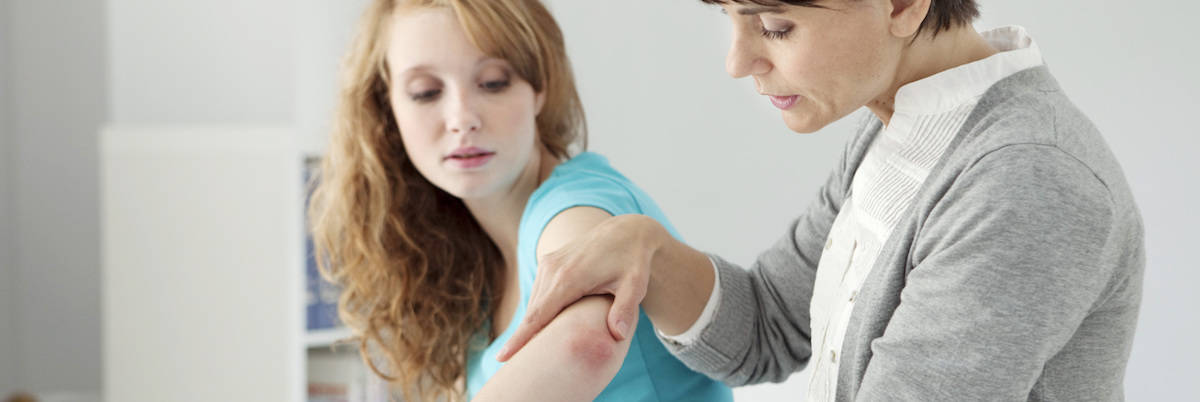
Eczema, a condition that can cause the skin to become red and itchy, is common in both adults and children. It often appears in the first six months to five years of children’s lives, and can appear as crusty, red patches of skin on your baby’s cheeks or near the joints of their arms and legs. These flare-ups can cause a lot of concern for parents as they try to find a way to alleviate their child’s discomfort.
What causes my child’s eczema?
There is no clear cause of eczema, but it is often inherited from parents. Skin contact with irritating substances can also cause flare-ups, as well as food allergies.
An important first step in soothing your child’s symptoms is to determine what may trigger flare-ups, such as certain allergens, soaps or laundry detergents. If they continue to experience irritation, there are a few remedies that can help relieve their discomfort.
Apply a wet wrap. Wet wraps can rehydrate and calm irritated skin, as well as boost the moisture on your child’s skin. After your child bathes, dampen a cloth or gauze in warm water and wrap it around the affected area, then wrap a dry layer over the wet one before putting on loose clothes or pajamas. You can leave the wet wrap on for several hours.
Take a soothing bath. Add colloidal oatmeal to a lukewarm bath and have your child soak for 10 to 15 minutes. Colloidal oatmeal has anti-inflammatory and antioxidant properties, and can reduce itching and help the skin retain moisture.
Develop a routine for your child’s bath time and skincare. Use gentle cleansers and have your child bathe in lukewarm water instead of hot water, which can irritate dry skin. Pat your child’s skin dry instead of scrubbing after they bathe, and apply moisturizer immediately after to lock in moisture. Look for fragrance and dye-free moisturizers, which are safer and less irritating than perfumed ones.
Use over-the-counter medicines. Topical treatments, including ointments with steroids like hydrocortisone cream, are an extremely common over-the-counter treatment for eczema. Apply the cream within a few minutes of your child bathing to maximize the benefits.
You may have to try many different treatments before finding one that is best for managing your child’s eczema symptoms. Be patient as you test different methods, but if your child continues to have severe discomfort, you can seek help from a dermatologist, who can help determine a treatment plan to lessen your child’s symptoms.
Disclaimer: This blog provides general information and discussion about medical, cosmetic, mohs, and surgical dermatology. The words and other content provided in this blog, and in any linked materials, are not intended and should not be construed as medical advice. If the reader or any other person has a medical concern, he or she should consult with an appropriately-licensed dermatologist or other health care worker.
